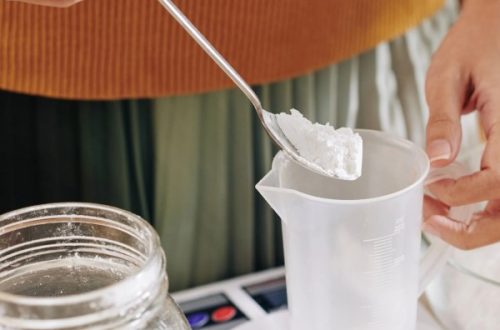Watercolor paints offer a unique blend of vibrancy and fluidity, making them a captivating medium for artistic expression. However, for beginners, the fear of mistakes and the unpredictable nature of watercolors can be daunting. This guide dismantles those anxieties and provides step-by-step tutorials for easy watercolor paintings, empowering you to embark on your artistic journey with confidence.
Part 1: Essential Supplies and Techniques
Gathering Your Watercolor Arsenal:
You don’t need a vast array of supplies to create beautiful watercolor paintings. Start with a basic watercolor set of 12-18 colors, high-quality watercolor paper (preferably 140lb cold-pressed), round brushes in various sizes (size 6, 10, and 14 are a good starting point), a container for water, and some paper towels.
Understanding Wet-on-Wet and Wet-on-Dry Techniques:
Mastering basic watercolor techniques unlocks endless possibilities. Wet-on-wet involves painting onto a wet surface, creating soft washes and beautiful color blends. Wet-on-dry allows you to paint on a dry surface, resulting in sharper lines and details. Experiment with both techniques to discover their unique effects.
Part 2: Your First Watercolor Masterpiece: A Serene Landscape
A Wash of Color for the Sky:
To start, wet the top half of your paper with clean water. This will create a damp surface that is ideal for watercolor painting. While the paper is still damp, use a light blue or teal watercolor to create a wash for the sky. Gently apply the watercolor to the wet paper, allowing the colors to blend and flow naturally. The dampness of the paper will help the colors spread and create a soft, diffused effect, resembling the gentle hues of a sky. Be mindful of leaving some areas lighter to represent the natural variations in the sky. You can also experiment with gently lifting off excess color with a clean, damp brush if needed. Observing the colors blend and flow on the damp paper can create a beautiful, serene background for your painting.

Rolling Hills and Lush Greenery:
After allowing the sky to dry slightly, you can proceed to paint rolling hills using a wet-on-dry technique. Mix a light green or brown watercolor and begin painting gentle, rolling curves across the bottom half of the paper, representing the undulating landscape. Be mindful of the shapes and contours of the hills, allowing them to flow and merge into one another organically. When applying the watercolor to the dried paper, the wet-on-dry technique will allow for greater control and definition in your brushstrokes. It is essential to let this layer of hills dry completely before moving on to add further details or layers to your landscape painting. The drying process ensures that the colors set and adhere to the paper, creating a solid foundation for additional layers and textures as you continue to build the composition.
Adding Details:
Using a finer brush and a darker green watercolor, you can begin to add intricate details such as trees and bushes to the rolling hills. Taking your time, carefully apply the darker green to create the foliage, allowing the brush to dance and swirl, mimicking the natural growth of trees and shrubs. With a thin brush and brown watercolor, add in tree trunks and branches, keeping in mind the variations in shapes and angles found in nature. It’s important to remember that imperfections can add to the charm of a watercolor painting. Embrace the unpredictability and serendipity of the medium, letting the colors bleed and blend in their own unique way. Each stroke adds character and depth to the composition, lending a sense of organic beauty that is inherent to watercolor art. Enjoy the process and embrace the nuances that make each painting truly one-of-a-kind.

Bringing Life with a Pop of Color:
After the painting has dried completely, you can enhance the landscape by adding a splash of color to represent wildflowers dotting the hills. Using a small amount of red or yellow watercolor, delicately paint small patches or dots across the hills to depict the vibrant and lively wildflowers. This touch of color adds a charming and picturesque element to the scene, bringing a sense of life and natural beauty to the painting. Be mindful of spacing and distribution, ensuring that the wildflowers are scattered organically, as they would be in nature. The addition of these colorful accents can further accentuate the rolling hills and create a captivating focal point within the composition. Embracing the subtle details and nuances of the landscape allows you to infuse your painting with an evocative sense of vibrancy and harmony.
Part 3: Unleashing Creativity: Exploring Different Subjects
A Vibrant Bouquet:
Watercolors are particularly adept at capturing the delicate beauty of flowers. When painting floral scenes, it’s best to start by wetting the background paper with clean water. This creates a damp surface that allows the colors to blend seamlessly and gives the petals a soft, diffused appearance. While the paper is still damp, use a variety of colors to create loose washes for the petals, ensuring that the hues flow and merge naturally, capturing the ethereal quality of the blooms. Once the initial washes have dried, you can add details such as stems and leaves with thin, controlled brushstrokes. These delicate elements bring the floral composition to life, adding a sense of realism and depth to the painting. Pay attention to the natural curves and shapes of the stems and leaves, allowing the watercolor to capture the graceful movements and textures found in nature.

A Playful Fish:
Create a playful underwater scene! Use a wet-on-wet technique to create a blue wash for the background. While still damp, add pops of yellow and orange for sunlight filtering through the water. Use a darker blue and a fine brush to paint a simple fish swimming across the page.
Part 4: Tips and Tricks for Continued Exploration
Embrace Experimentation:
Don’t be afraid to experiment! The beauty of watercolors lies in their unpredictable nature. Let the colors flow and blend organically. Embrace happy accidents – they often lead to unexpected artistic discoveries.
Practice Makes Perfect:
As with any art form, practice is key. Set aside some time each day or week to explore different techniques and subjects. The more you paint, the more comfortable and confident you’ll become.

Watercolor painting offers a rewarding journey of artistic expression. With a few basic supplies, a willingness to experiment, and these easy-to-follow tutorials, you can unlock your inner artist and create captivating watercolor masterpieces. So, grab your brushes, unleash your creativity, and enjoy the beautiful flow of watercolors!



